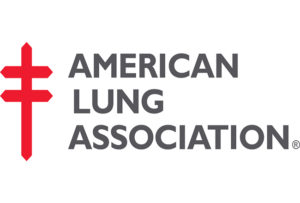Lung Association: Westchester gets an ‘F’ for air quality, again
 Westchester County’s air quality received an “F” from the American Lung Association, but that may not be a surprise to anyone whose been tracking the organization’s annual State of the Air report.
Westchester County’s air quality received an “F” from the American Lung Association, but that may not be a surprise to anyone whose been tracking the organization’s annual State of the Air report.
The national organization, which has a regional office in White Plains, has released yearly national air quality rankings for 19 years. Westchester County has failed its standards 19 times.
It’s the county’s elevated levels of ozone, the main gaseous component of smog, that drags down its score. All those hot summer days when “AIR QUALITY ALERT” flash across electronic highway screens and on local newscasts add up.
Westchester County had 18 high ozone days between 2014 and 2016, the three year period examined by the American Lung Association. That puts the county third highest among the 25 counties that the Lung Association had data for.
But the Lung Association said for Westchester County and the rest of New York, things are improving, despite the failing grade.
Michael Seilback, vice president of public policy and communications for the American Lung Association, said measures at the local, state and federal level to clean up air have been effective. An increase in hybrid and electric vehicles and stricter air quality standard set by the Clean Air Act have helped the situation from when the American Lung Association first launched the report.
So, while Westchester may still be failing, “This is like going from a 15 out of 100, to a 55 or a 60 out of 100,” Seilback said. “We still have a long way to go before putting this up on the fridge, but the trend is moving in the right direction.”
The report from the American Lung Association looked at both particle pollution and ozone pollution. Data on particle pollution is hard to come by, only about 900 of the 3,000 counties in the U.S. have sensors to track it. Westchester is among the counties that does not.
The nearest county with such sensors, Orange County, received an A for its lack of pollution, as did the other 14 counties in New York with sensors.
Ozone pollution carries significant health risks such as worsened asthma and chronic obstructive pulmonary disease. It can contribute to cardiovascular harm leading to heart attack and stroke, as well as damage the central nervous system.
The report noted that Westchester’s population of 974,542 has a large number of groups especially vulnerable to air pollution: 219,289 children under 18; 157,555 adults 65 and older; 41,034 people with COPD and 92,337 with adult or pediatric asthma.
The New York-Newark Tri-State region ranked as the 10th most polluted city in the U.S. by ozone pollution.
The report noted that ozone pollution isn’t just generated through local sources, such as cars and industry. It can also travel from far away regions and stick in the northeast.
Fairfield County, for example, had 50 high ozone days between 2014 and 2016, making it the most ozone polluted county east of the Mississippi. But the report noted that the majority of its ozone pollution came from sources outside the county.
“Even coal fired plants in the Midwest, ozone that’s produced there ends up traveling and settling over our region.” Seilback said. “Because of weather patterns and topography, this is where it sort of settles. The northeast is sometimes called the tailpipe of the nation, we get stuck with the pollution produced elsewhere.”
Nationwide, the report found ozone pollution worsened from 2014 through 2016 compared to the 2013 to 2015 period examined last year. More than 40 percent of people in the U.S. live in counties with unhealthy levels of either ozone or particle pollution. In New York, it’s 47 percent of residents.
The report blamed the increase in nationwide ozone pollution in part on record-setting heat in 2016. Its findings, according to the Lung Association, show how climate change is making it harder to protect human health.
The Lung Association report said any attempts to weaken the Clean Air Act or cut funds from federal or state clean air initiatives represent further threat to the country’s progress toward clean air.
“We’ve seen over the last four to five decades drastic improvement in air quality and it’s because we’ve had a Clean Air Act and federal government ensuring we do what we can to make sure Americans breathe clean air,” Seilback said.
“This report is twofold,” he added. “It’s saying we’ve made drastic improvement, and that despite those improvements there are still a lot of people breathing unhealthy air.”